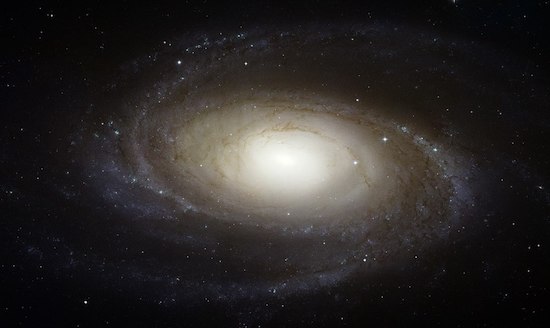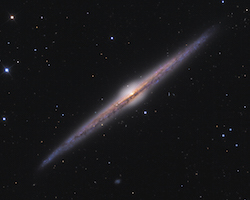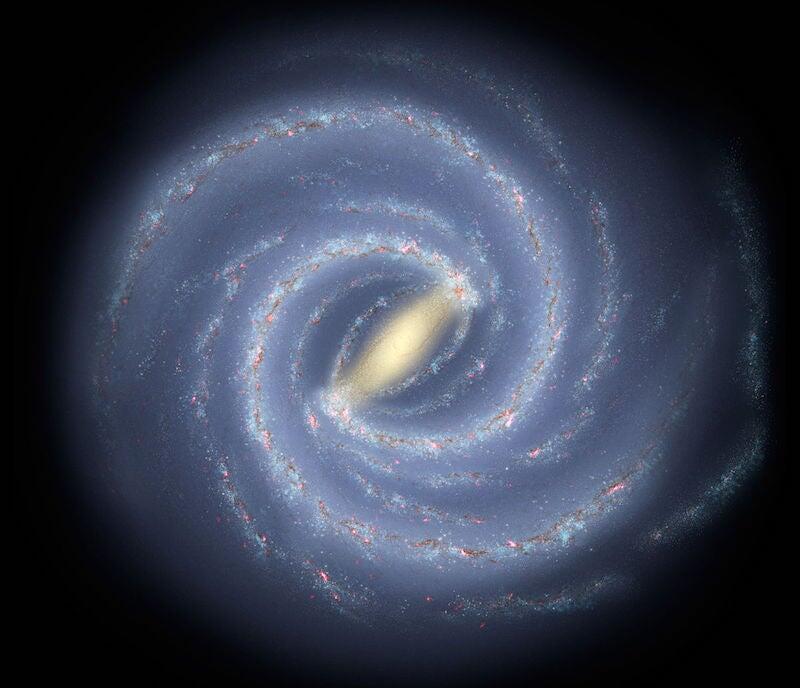
Spinning Spirals
Our home galaxy, the Milky Way, is classified as a spiral galaxy. So what makes a spiral galaxy? These galaxies are mostly known for the fact that they look like a spiral.
There are very obvious swirls of stars and dust coming off of the center. There are called the spiral arms. Typically these galaxies have two arms, but there have been some observed to have four, five, or even six arms.

Some spiral galaxies are described by what the center looks like. The center of the galaxy can either look like a bright sphere or a long glowing bar. Galaxies with bar-like centers are known as barred-spirals.
Sometimes, though, you can’t see the center or the arms of the galaxy very well. Think of looking at a donut; if you look from above you can see all the sprinkles and the hole in the center. If you look from the side, you can’t tell if there’s a hole in the center or what kind of sprinkles are on top. When this happens with galaxies, astronomers say the galaxy is ‘edge-on’ when we can see it from the side and ‘face-on’ when you can see it from the top.
 Spiral galaxies are made up of young stars, gas, and dust. You can see the dust in the dark spots of the spiral arms. The gas and dust are used to make new stars, and these baby stars glow very brightly. Astronomers use these facts to determine that spirals are typically young galaxies. They have not been around for very long in terms of the life time of the universe.
Spiral galaxies are made up of young stars, gas, and dust. You can see the dust in the dark spots of the spiral arms. The gas and dust are used to make new stars, and these baby stars glow very brightly. Astronomers use these facts to determine that spirals are typically young galaxies. They have not been around for very long in terms of the life time of the universe.
Additional images via Wikimedia Commons. Illustration of the Milky Way's spirals by NASA/JPL-Caltech/ESO/R. Hurt.

Our galaxy, the Milky Way, is a spiral galaxy. Here, an artist has drawn the spiral structure of our galaxy, using data from a telescope that allows us to observe infrared wavelengths from space.
Be Part of
Ask An Earth and
Space Scientist
By volunteering, or simply sending us feedback on the site. Scientists, teachers, writers, illustrators, and translators are all important to the program. If you are interested in helping with the website we have a volunteers page to get the process started.
